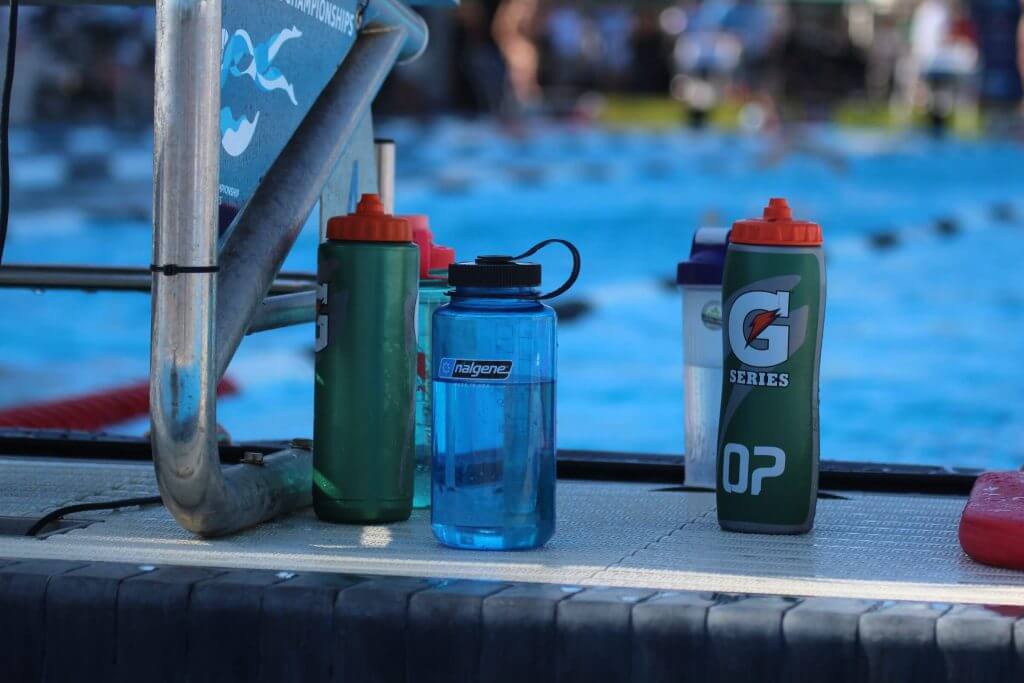Wellness Wednesday: The Importance of Recovery Hydration (Try This Challenge!)

Wellness Wednesday: The Importance of Recovery Hydration (Try This Challenge!)
In this installment of Wellness Wednesday, longtime Swimming World contributor Dawn Weatherwax reviews the importance of recovery through hydration.
Hydration is broken down into two segments: Performance hydration and recovery hydration. This article focuses on the latter.
Recovery hydration means the athlete is fully rehydrated by the end of the day. This ensures the body and brain are optimally recuperating while they sleep. However, 76% of athletes show up dehydrated to morning training, and 66% show up to all the other trainings 1% dehydrated.
To obtain ideal hydration, an athlete needs enough fluid and sodium each day to match their individual needs.
WHY IS IT IMPORTANT?
If you are 1% dehydrated, performance can decline up to 12%!
• Reduces speed and recovery
• Decreases concentration and focus
• Increases susceptibility to injuries
• Accelerates fatigue
• Promotes muscle breakdown
• Promotes storage of fat
• Decreases absorption of nutrients and removal of toxins
• Enhances the possibility of muscle cramps during activity
HOW MUCH?
• The rule of thumb is half of the athlete’s weight in fluid ounces a day, plus what is lost during activity.
• Hydration during activity will vary on many factors: age, gender, body composition, intensity, duration, climate, etc.
• The quick directive is 8-20 oz of fluid per hour of activity, but some need more, depending on the rate the athlete sweats.
• For our recovery hydration challenge, the goal is to make it simple. Therefore, go with one-half of your weight in fluid ounces a day plus 10-20 oz per activity hour.
MUST CONSUME ENOUGH SODIUM
Many people would have you believe that potassium is the main electrolyte for optimal hydration, but they are wrong. Sodium is the electrolyte that is essential.
Sodium helps bring the fluid into the muscle cell versus getting urinated out by the kidneys. Athletes can lose from 200 mg up to 2,000 mg of sodium per pound of sweat versus about 30-150 mg of potassium per pound.
The goal for the hydration challenge is a minimum of 3,000 mg of sodium a day and ideally spreading it. To know exactly what to consume, log onto an app such as Cronometer to figure your intake.
WHAT COUNTS?
Hydration Options (but not limited to)
• Water
• Infused waters
• Herbal teas, cold or hot
• Milks: regular, soy, oat, rice, nut
• Smoothies
• Juice (but in limited amounts)
• Sports drinks (preferred only around activity)
• Fluids you add to recipes (example: cereals, smoothies)
Electrolyte food options (but not limited to)
• Broths
• Dill pickles and other fermented foods
• Jerky
• Salted pretzels, popcorn, nuts, seeds, peanuts
• Tomato juice and tomato products
Electrolyte product options (but not limited to)
• Hydrant
• LMNT
• Gatorlyte or GFit
• Nuun Sport, GU or Precision Hydration Tablet
• Orgain Hydroboost
BEGINNER HYDRATION CHALLENGE!
5-9 a.m.
20-32 oz of fluid
500-800 mg sodium
9-12 p.m.
20-32 oz of fluid
500-800 mg sodium
12-3 p.m.
20-32 oz of fluid
500-800 mg sodium
3-6 p.m.
20-32 oz of fluid
500-800 mg sodium
6-9 p.m.
20-32 oz of fluid
500-800 mg sodium
Adjust as needed, depending on age and weight. For example, for younger athletes:
10-16 oz of fluid
250-400 mg sodium per segment
ADVANCED HYDRATION
If you want to get more scientific about your hydration and electrolyte numbers, please reach out to a sports or performance dietitian or an exercise physiologist to customize your hydration plan.
SUMMARY
As an athlete sets out to train and compete, a daily recovery hydration plan is imperative to optimize the recovery process. Think about the competitive edge this creates!
* * *
Here are two sample recipes to consider:
CITRUS AND CUCUMBER DRINK
Ingredients:
2-3 liters water
2 large oranges, sliced
1 lemon, sliced
1/2 large cucumber, sliced
1 handful of fresh mint
Instructions:
1. Put oranges, lemon and cucumber in the water pitcher. Using a long spoon, gently mash fruits/veggies—this will release more flavor.
2. Take the mint and gently mash it to release the natural oils—add to the pitcher.
3. Add water to the pitcher and stir to begin the infusion process.
4. Drink/serve immediately, or store in the refrigerator for up to two days.
COCO-LIME HOMEMADE ELECTROLYTE DRINK
In this recipe, I’ve aimed for a 6% solution, which is 6 grams of carbohydrates per 100 ml of liquid. It’s within the 6-8% recommended.
It also contains the minimum amount of sodium and a whopping 391 mg of potassium. It makes approximately 24 ounces, and a serving is 8 ounces.
Ingredients:
2 cups unsweetened coconut water
1/3 cup fresh lime juice
2/3 cup water
1-1/2 tsp raw honey
1/8 – 1/4 tsp Himalayan pink salt
Instructions:
1. Combine all ingredients in a quart-size Mason jar and stir until the salt is dissolved.
Dawn Weatherwax (RD, LD, ATC, CSCS) is a registered/licensed dietitian with a specialty in sports nutrition and founder of Sports Nutrition 2Go and Dawn Weatherwax Sports Nutrition Academy. She has been working with swimmers for over 25 years and has launched a sports nutrition academy for athletes. In addition, she is an athletic trainer with a certification in strength and conditioning from The National Strength and Conditioning Association.



